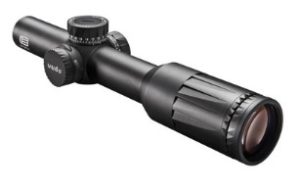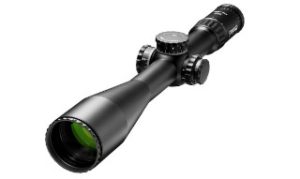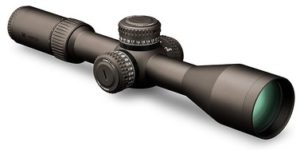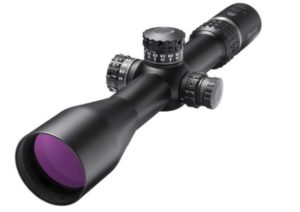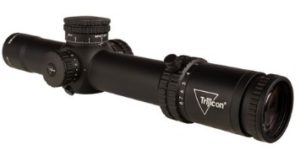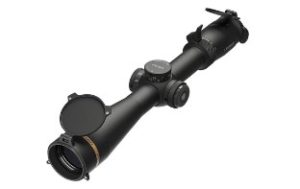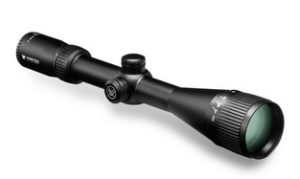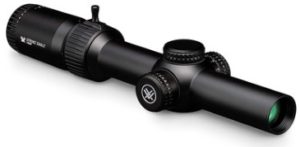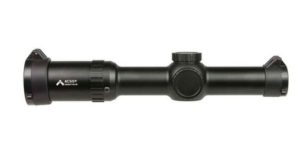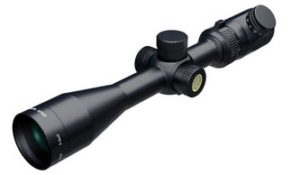What is the difference between FFP and SFP? Let’s comprehensively answer this question.
Difference between FFP and SFP
What differentiates the two is basically the location of the reticle in the assembly.
In the first focal plane (FFP), the reticle is located towards the front of the erector tube assembly (the back portion of the scope), here the reticle size increases or decreases in the same exact relation as the image being viewed. In the Second focal plane (SFP) the reticle is located on the erector tube assembly/magnification lenses, the reticle remains the same no matter the magnification.
First Focal Plane (FFP)

In the Front or first focal plane (FFP), the reticle grows and reduces in size simultaneously to the image being viewed.
The reticle is located towards the front of the erector tube assembly. Scopes with this focal plane have better views of the target and crosshairs.
Advantages
- Accurate across all magnification settings
- Crosshairs are visible even at higher magnifications
- Suitable for long-range use
Disadvantages
- Much more expensive than the SFP (associated with high-end scopes mostly)
- Small targets at high power may be covered by Subtensions
- Difficult to see in low light conditions and at low power
First Focal Plane Is Best For:
- Shooting with precision at medium to long range with multiple magnifications
- Shooting in a variety of shooting situations with flexibility
- Shooters with a higher budget/ range estimate rather than counting clicks
- Shooters who want to use holdovers extensively
- When using a red-dot style sight picture low-power variable scopes at 1x magnification
- Shooters who want to use bullet drop compensation and wind leads at any magnification without doing math
Best FFP Scopes
| 1) Leupold Mark 5HD 5-25x56mm Rifle Scope
|
|
| 2) Athlon Optics 4.5-30 x 56 mm Rifle Scope
|
|
| 3) EOTech Vudu 1-6×24 FFP Precision Rifle Scope
|
|
| 4) Steiner T5Xi 5-25×56 mm Rifle Scope
|
|
| 5) Vortex Razor HD Gen II 4.5-27x56mm Rifle Scope
|
|
| 6) ATN X-Sight 4K Buckhunter 3-14x50mm Rifle Scope
|
|
| 7) Burris Xtreme Tactical 3-15x50mm Rifle Scope
|
|
| 8) Swampfox Patriot 6-24x50mm Rifle Scope
|
|
| 9) Trijicon Credo 1-8x28mm Rifle Scope
|
|
| 10) U.S. Optics TS-6X 1-6x24mm Rifle Scope
|
|
Related: First Focal Plane Explained. Meaning, Pros, and Cons (Comprehensive)
Second Focal Plane (SFP)

With the Second focal plane (SFP) scopes, the reticle remains the same size no matter the magnification setting. The reticle is located behind the magnification lenses between the eyepiece/erector tube assembly.
Advantages
- Reticle Crosshairs are visible in all magnification settings
- Great for rifle scopes for hunting
- Easy to use in low magnification
- Affordable since they are easy to produce
Disadvantages
- Only accurate at predetermined magnification levels
- Nor reliable for long-range shooting
Second Focal Plane Is Best For:
- Shooting using fine reticle low power variable scopes
- Benchrest and competition shooting
- Poor eyesight shooters thanks to the large reticle at all times
- Shooters who need consistent sight pictures at all magnifications
- Shooters on a budget but need to maximize performance
- Medium to long-range shooting at maximum magnification
Best SFP Scopes
| 1) Leupold VX-6HD 3-18x44mm Rifle Scope
|
|
| 2) Vortex Crossfire Rifle Scopes
|
|
| 3) Vortex Strike Eagle Rifle Scopes
|
|
| 4) Primary Arms 1-6 x 24 mm Rifle Scope
|
|
| 5) Athlon Optics 4-16 x 40 mm Rifle Scope
|
|
Final Verdict
What is the Difference between FFP and SFP?
In the first focal plane (FFP), the reticle is located towards the front of the erector tube assembly(the back portion of the scope), here the reticle size increases or decreases in the same exact relation as the image being viewed. In the Second focal plane (SFP) the reticle is located the magnification lenses on the erector tube assembly, the reticle remains the same no matter the magnification.
We have answered this question comprehensively highlighting the pros and cons and also listed the different situations each focal plane is best suited for.
Related



